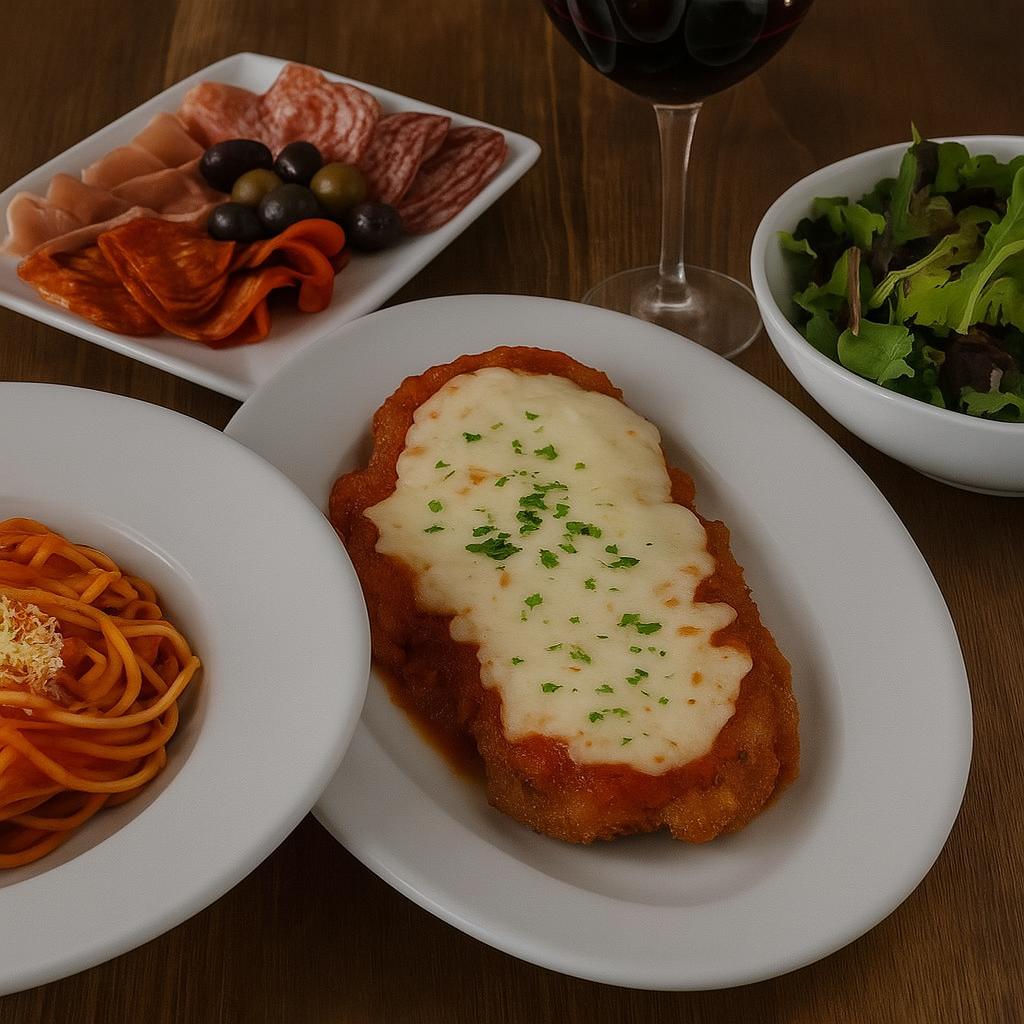
Italian cuisine, with its rich flavors and diverse regional offerings, is a universal crowd-pleaser, making it an ideal choice for catered events of all kinds. Whether you’re planning a cozy family get-together, an elegant wedding reception, or a corporate luncheon, a well-curated Italian catering menu can elevate the experience for your guests.
But creating the perfect menu is about more than just choosing dishes; it’s about balance, presentation, and pairing. This guide will walk you through how to build an Italian catering menu that suits your occasion, satisfies your guests, and leaves a lasting impression.
1. Understand the Occasion & Guest Preferences
Before selecting specific dishes, consider the tone of the event and the expectations of your guests:
- Casual gatherings call for comfort food, easy-to-serve dishes, and family-style presentation.
- Formal occasions may benefit from multi-course plated meals or upscale buffet service.
- Corporate events typically require meals that are convenient, non-messy, and easy to accommodate dietary preferences.
Once you’ve identified the vibe, you’ll be ready to build a menu that aligns perfectly.
2. Start with Antipasti (Appetizers)
Antipasti sets the tone for the entire meal and should provide variety without overwhelming the palate. Choose a mix of textures and flavors:
- Casual Events: Bruschetta with tomato and basil, marinated olives, mini caprese skewers, garlic knots.
- Formal Events: Prosciutto-wrapped melon, grilled artichokes, stuffed mushrooms, seafood salad.
- Office Lunches: Antipasto platter with cured meats, cheeses, and roasted vegetables; focaccia squares.
The goal is to awaken the appetite and spark conversation around delicious, shareable bites.
3. Choose the Right Primi (First Courses)
The first course in Italian tradition typically features pasta, risotto, or soup. It’s often the heart of the menu, so selecting a dish that resonates with your audience is key:
- Casual Gatherings: Baked ziti, spaghetti Bolognese, or penne alla vodka served in large trays.
- Black-Tie Weddings: Truffle risotto, lobster ravioli, or gnocchi in sage brown butter sauce for a touch of luxury.
- Corporate Settings: Lasagna (meat or vegetarian) or pasta primavera, hearty but easy to serve.
Offering both a meat and a vegetarian option ensures inclusivity for all guests.
4. Select a Complementary Secondi (Main Course)
The second course traditionally focuses on protein, meat or fish, and should contrast or complement the primi. Consider seasonal ingredients and cooking methods that align with your event type:
- Family Celebrations: Chicken parmigiana, grilled sausages with peppers, or meatballs in marinara.
- Weddings: Herb-crusted salmon, veal scaloppini, or filet mignon with Chianti glaze.
- Office Lunches: Chicken marsala, eggplant rollatini, or Italian-style grilled chicken breasts.
Secondi should feel substantial yet not overly heavy, especially for daytime events.
5. Round Out the Menu with Contorni (Side Dishes)
Side dishes add color, balance, and freshness to the menu. Think beyond the traditional salad:
- All Events: Roasted seasonal vegetables, garlic sautéed green beans, rosemary potatoes, or creamy polenta.
- Summer Events: Grilled zucchini and eggplant, arugula salad with lemon vinaigrette.
- Cooler Months: Baked mushrooms, risotto cakes, or stuffed peppers.
Make sure the sides support the star proteins without overpowering them.
6. Save Room for Dolce (Desserts)
Italian desserts are simple yet satisfying, perfect for ending your event on a sweet note:
- Casual Events: Tiramisu, cannoli, almond cookies, or panna cotta shooters.
- Weddings: Mini dessert table with Italian wedding cookies, chocolate-dipped biscotti, and limoncello cake.
- Office Events: Individual cups of zabaglione, mini cheesecakes, or Nutella-stuffed pastry bites.
Offering a mix of small, bite-sized desserts allows guests to sample multiple flavors.
7. Wine Pairing Tips
To enhance the meal, pair each course with appropriate Italian wines:
- Antipasti: Sparkling Prosecco or a crisp Pinot Grigio.
- Primi: Chianti with tomato-based pastas; Barolo with truffle risotto.
- Secondi: Sangiovese or Brunello for red meats; Vermentino for seafood.
- Dessert: Moscato d’Asti or Vin Santo.
If your event includes wine service, offering a white and red option throughout allows for easy pairings and wider appeal.
Sample Menu Ideas by Occasion
Casual Family Gathering
- Appetizers: Bruschetta, olives, caprese skewers
- Pasta: Baked ziti or rigatoni with sausage
- Main: Chicken parmigiana or meatballs
- Sides: Garlic bread, Caesar salad
- Dessert: Cannoli and almond cookies
Black-Tie Wedding
- Appetizers: Seafood salad, grilled artichokes
- Primi: Lobster ravioli or truffle risotto
- Main: Filet mignon with red wine reduction
- Sides: Sautéed spinach, rosemary potatoes
- Dessert: Limoncello layer cake, wedding cookies
Office Lunch
- Appetizers: Antipasto platter
- Pasta: Lasagna or penne primavera
- Main: Chicken marsala or eggplant rollatini
- Sides: Mixed green salad, focaccia
- Dessert: Panna cotta shooters or biscotti
Tips for Seamless Italian Catering
- Balance rich and light dishes to avoid an overly heavy menu.
- Include vegetarian or gluten-free options to accommodate dietary needs.
- Use seasonal ingredients for fresher, more flavorful results.
- Coordinate with your caterer to align portion sizes, setup needs, and service style (buffet, plated, or boxed).
Bring the Flavors of Italy to Your Event with Mama Ricotta’s
At Mama Ricotta’s, we bring the soul of Italian cuisine to every occasion. Whether you’re planning an intimate dinner party or a grand celebration, our catering team offers expertly crafted menus made from scratch with authentic ingredients and Italian heart.
Let us help you plan a memorable meal your guests will rave about.
Visit Mama Ricotta’s to explore our catering options or request a custom menu consultation today. Buon appetito!
![$o_logo['title']](https://www.mamaricottas.com/site/wp-content/uploads/2019/07/door_dash.jpg)
